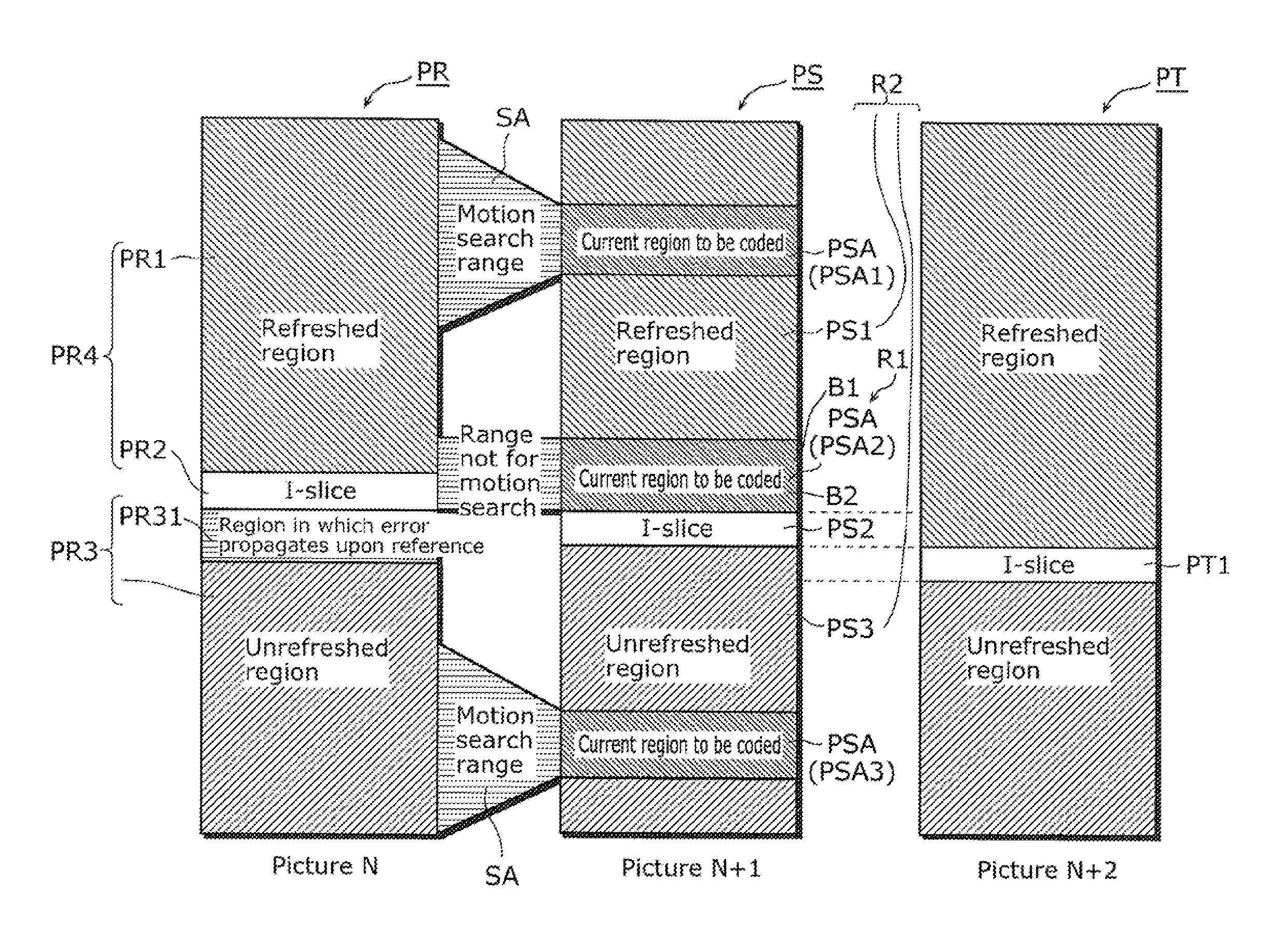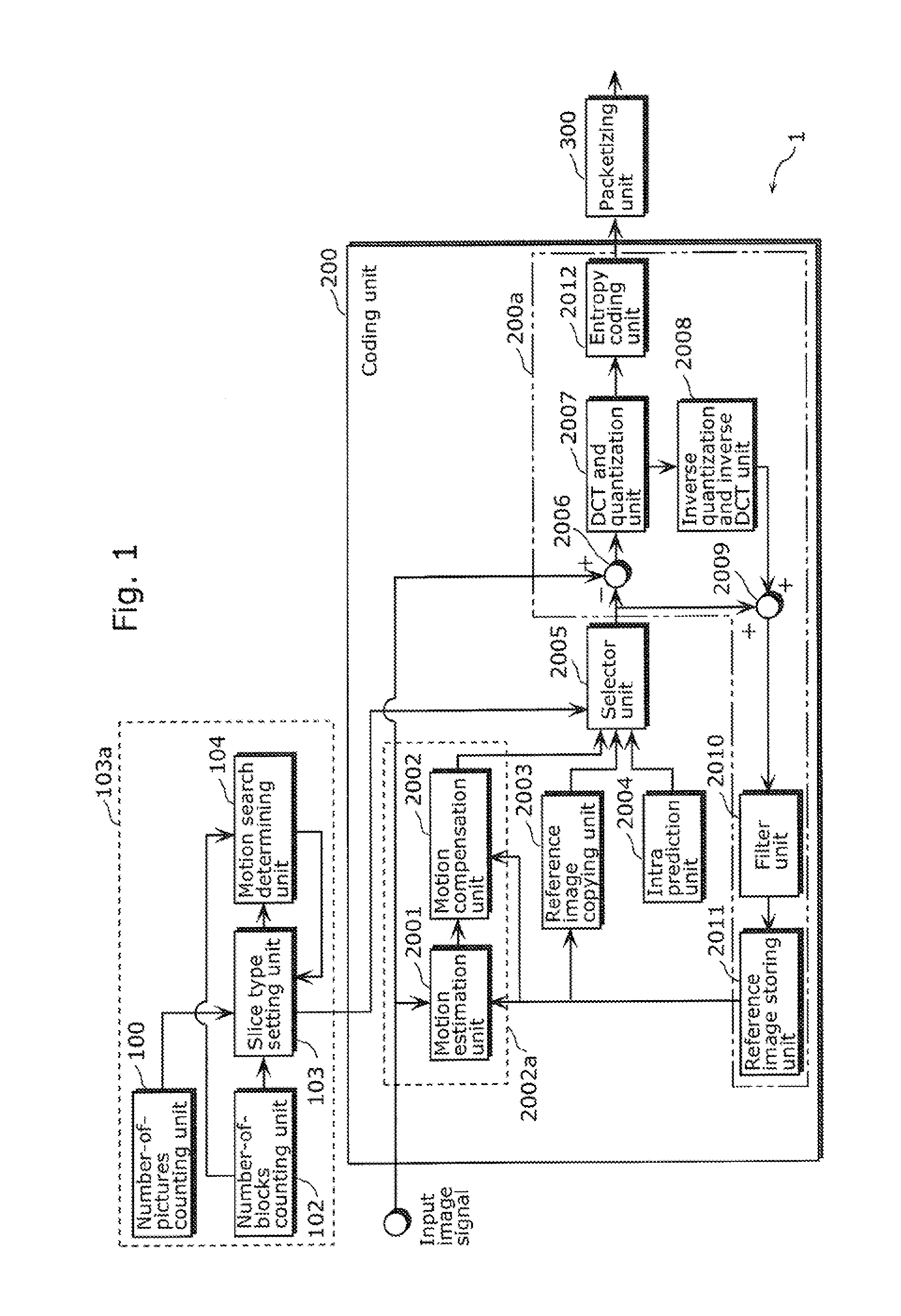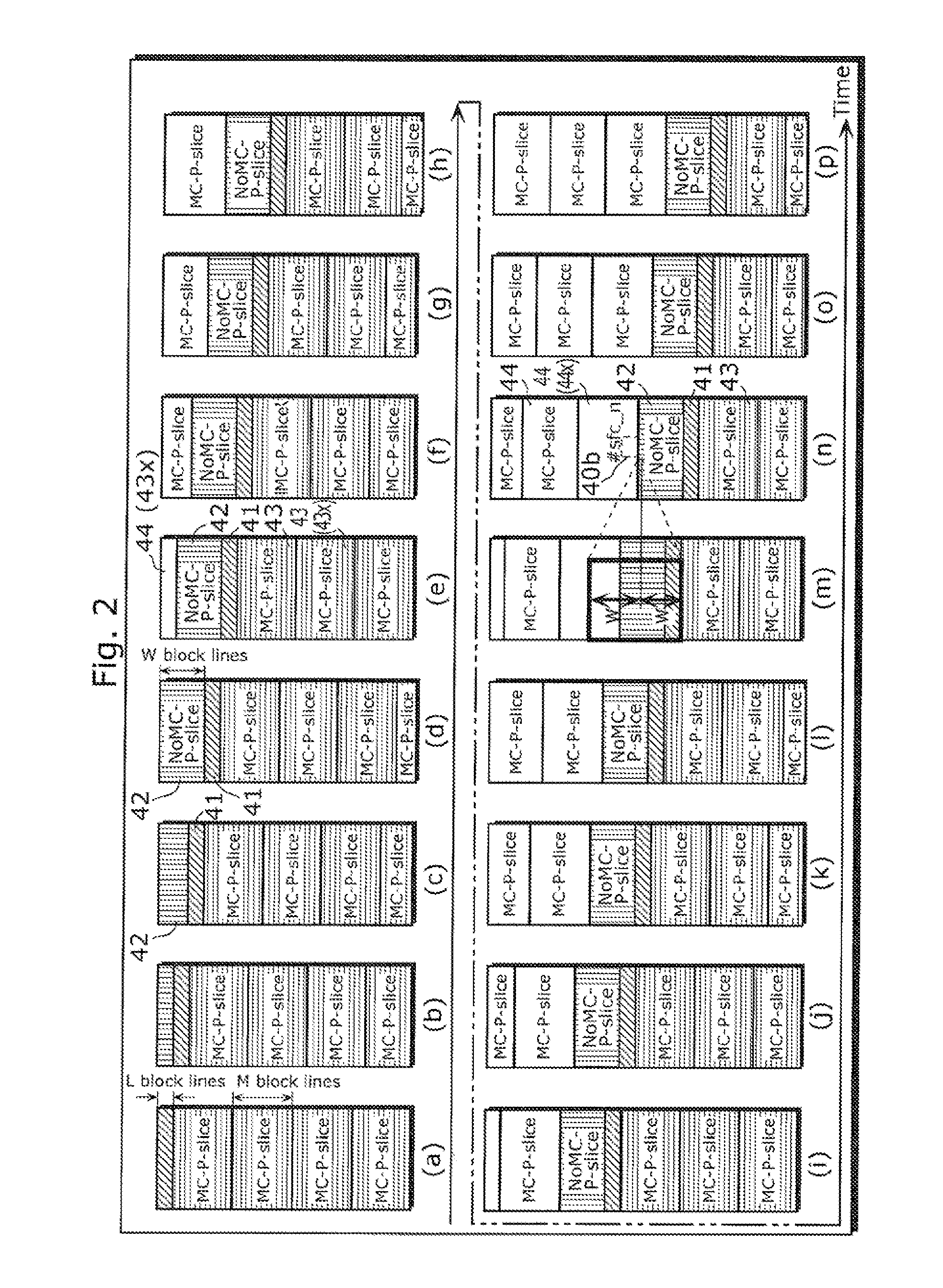Moving picture coding method, apparatus, program, and integrated circuit
- Summary
- Abstract
- Description
- Claims
- Application Information
AI Technical Summary
Benefits of technology
Problems solved by technology
Method used
Image
Examples
embodiment 2
(Structure)
[0209]FIG. 7 is a block diagram showing a structure of a moving picture coding apparatus 1A in Embodiment 2 according to the present invention. The same descriptions about the same structural elements as those of the moving picture coding apparatus 1 in Embodiment 1 are not repeated in the following descriptions,
[0210]In the case where a transmission error occurs, a number-of-cycles-of-slice-insertion setting unit 105 (for example, an element of a selecting unit 105x (FIG. 28)) determines the number of cycles of I-slice insertion performed by the moving picture coding apparatus 1A so that the moving picture coding apparatus 1A performs picture refresh for prevention of propagation of image quality degradation. Next, the number-of-cycles-of-slice-insertion setting unit 105 notifies each of a slice type setting unit 103 and a motion search determining unit 104 of the determined number of cycles of slice insertion. The number-of-cycles-of-slice-insertion setting unit 105 mak...
embodiment 3
[0226]An moving image coding method according to Embodiment 3 includes a first coding process of performing inter coding without using any motion vectors on each of first P-slices (NoMC-P-slices 42Aa and 42Ab) included in a first region (the first region R1 in FIG. 19). In this first coding process, the maximum value for the size of each of the first P-slices (NoMC-P-slices 42Aa and 42Ab) is smaller than the maximum value for the size (the size of the MC-P-slice 43 in FIG. 19) of second P-slices (MC-P-slices 43 and 44 in FIG. 19).
[0227]Here, the maximum value for the size (for example, the size of the NoMC-P-slice 42Aa) of the first P-slice (NoMC-P-slice 42A) may be larger than the size of the I-slice (I-slice 41 in FIG. 19) in the picture (picture PS in FIG. 19) including the first P-slices (NoMC-P-slices 42Aa and 42Ab) having the size corresponding to the maximum value.
[0228]Each of FIG. 11 to FIG. 13 is a diagram for illustrating Embodiment 3.
[0229]The moving image coding apparat...
embodiment 4
[0249]A moving picture coding method in Embodiment 4 is intended to code each of a first picture (the picture (i) in FIG. 17) that includes an I-slice and P-slices and is at a first time point (for example, at the time point of (i) in FIG. 17) and a second picture (the picture (k) in FIG. 17) that includes an I-slice and P-slices and is at a time point (for example, at the time point for (k) in FIG. 17) that is later than the first time point, and further code a third picture (the picture (j) in FIG. 17) that does not include any I-slice and is at a time point (the time point for (j)) between the first time point and the second time point.
[0250]Here, for example, in the moving picture coding method, the third picture ((j) in FIG. 17) may include a region R3 including both a first region (a NoMC-P-slice 42 region in (i) in FIG. 17, a first region R1) and an I-slice region (I-slice PR2 in (i) in FIG. 17) in the first picture ((j) in FIG. 17). In addition, the first coding process (per...
PUM
 Login to View More
Login to View More Abstract
Description
Claims
Application Information
 Login to View More
Login to View More - R&D
- Intellectual Property
- Life Sciences
- Materials
- Tech Scout
- Unparalleled Data Quality
- Higher Quality Content
- 60% Fewer Hallucinations
Browse by: Latest US Patents, China's latest patents, Technical Efficacy Thesaurus, Application Domain, Technology Topic, Popular Technical Reports.
© 2025 PatSnap. All rights reserved.Legal|Privacy policy|Modern Slavery Act Transparency Statement|Sitemap|About US| Contact US: help@patsnap.com



